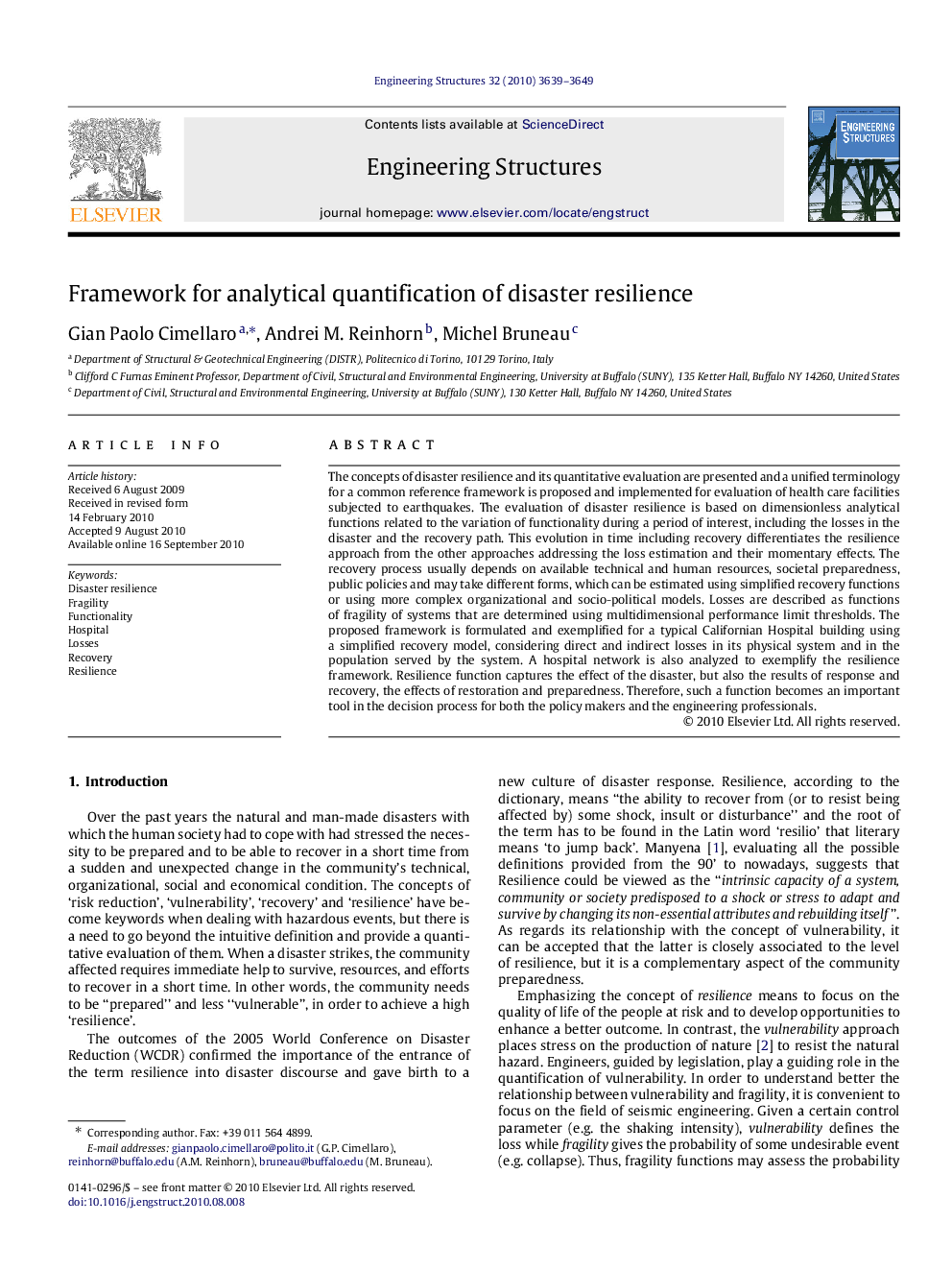| Article ID | Journal | Published Year | Pages | File Type |
|---|---|---|---|---|
| 267963 | Engineering Structures | 2010 | 11 Pages |
The concepts of disaster resilience and its quantitative evaluation are presented and a unified terminology for a common reference framework is proposed and implemented for evaluation of health care facilities subjected to earthquakes. The evaluation of disaster resilience is based on dimensionless analytical functions related to the variation of functionality during a period of interest, including the losses in the disaster and the recovery path. This evolution in time including recovery differentiates the resilience approach from the other approaches addressing the loss estimation and their momentary effects. The recovery process usually depends on available technical and human resources, societal preparedness, public policies and may take different forms, which can be estimated using simplified recovery functions or using more complex organizational and socio-political models. Losses are described as functions of fragility of systems that are determined using multidimensional performance limit thresholds. The proposed framework is formulated and exemplified for a typical Californian Hospital building using a simplified recovery model, considering direct and indirect losses in its physical system and in the population served by the system. A hospital network is also analyzed to exemplify the resilience framework. Resilience function captures the effect of the disaster, but also the results of response and recovery, the effects of restoration and preparedness. Therefore, such a function becomes an important tool in the decision process for both the policy makers and the engineering professionals.
